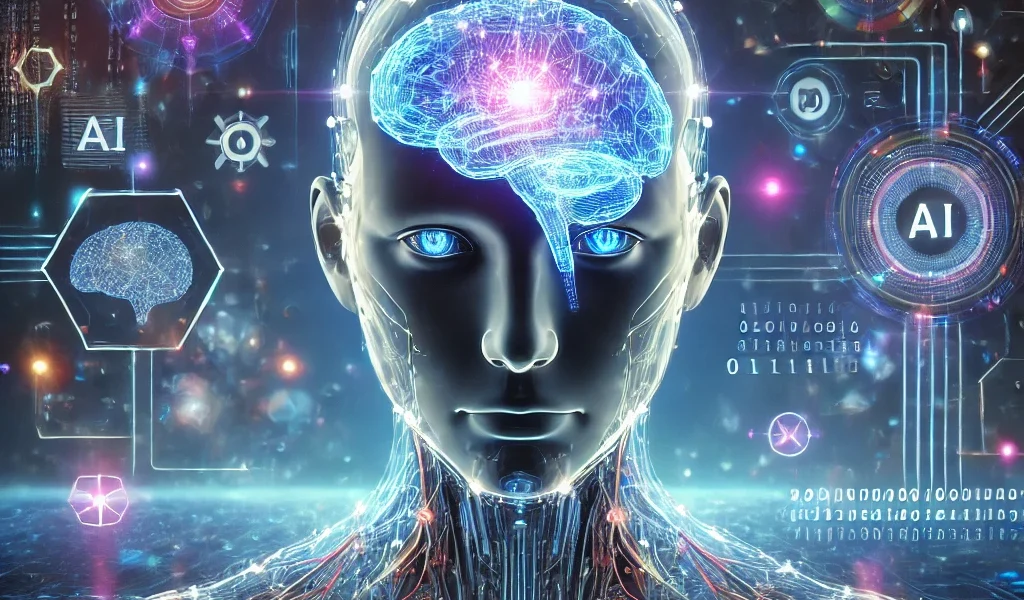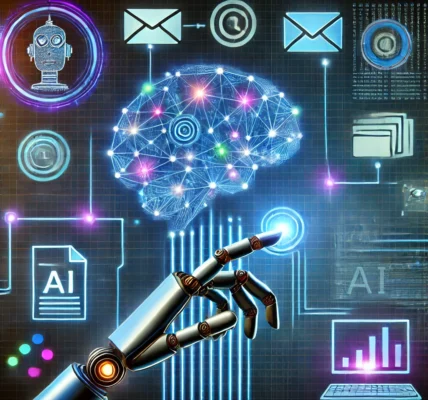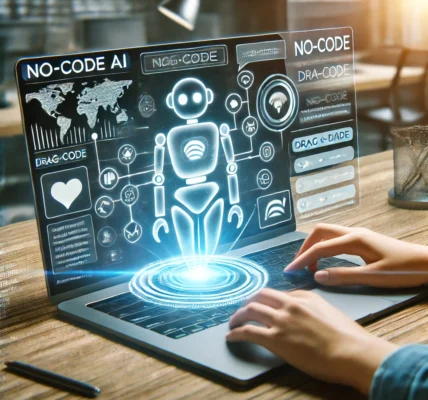A Beginner’s Guide to Understanding Artificial Intelligence
Artificial Intelligence (AI) is a rapidly evolving field of technology that seeks to create machines capable of performing tasks that typically require human intelligence. At its core, AI enables computers to learn from data, make decisions, and even solve problems autonomously. As AI continues to expand its presence in various sectors, understanding its basics becomes essential for anyone interested in the modern technological landscape.

This beginner’s guide will break down the fundamental concepts of AI, exploring its types, applications, and the underlying technologies that drive its development. Readers will gain insights into how AI is transforming industries, from healthcare to finance, and what it means for the future of work and society.
Navigating the world of artificial intelligence may seem daunting, but with a clear understanding of its core principles and potential, anyone can appreciate its significance. Exploring these ideas can not only clarify what AI is, but also inspire readers to engage more deeply with a technology that is shaping our world.
Understanding AI and Its Core Concepts

Artificial Intelligence (AI) encompasses various approaches and technologies designed to enable machines to perform tasks that typically require human intelligence. Key components include machine learning, neural networks, and distinctions between narrow and general AI.
Defining Artificial Intelligence
Artificial Intelligence refers to the capability of a machine to imitate intelligent human behaviour. AI systems can analyse data, learn from experiences, and make decisions. These systems do not possess consciousness but rely on algorithms to process information.
There are two main categories of AI:
- Narrow AI: Designed for specific tasks, such as voice recognition or playing chess.
- General AI: Envisions machines with the ability to perform any intellectual task that a human can do.
AI Systems and How They Work
AI systems function by processing vast amounts of data and identifying patterns. They employ algorithms to transform input into actionable insights.
The workflow typically involves:
- Data Collection: Sourcing data relevant to the task.
- Data Processing: Cleaning and organising data for analysis.
- Model Training: Using the processed data to train models through methods like supervised and unsupervised learning.
These components together help machines learn from their environment and improve over time.
Machine Learning and Neural Networks
Machine Learning is a subset of AI that enables machines to learn from data without explicit programming. It uses statistical techniques to enable computers to improve at tasks with experience.
Neural Networks, inspired by the human brain, are a critical part of machine learning. They consist of interconnected nodes (neurons) that process information in layers. Key types include:
- Feedforward Networks: Data flows in one direction.
- Convolutional Neural Networks (CNNs): Primarily used for image recognition.
- Recurrent Neural Networks (RNNs): Effective for sequential data, such as language.
This framework allows for intricate data processing capabilities.
Narrow vs General
Narrow AI is the current reality, where systems are designed to perform specific tasks. Examples include virtual assistants, recommendation systems, and image recognition software. These systems excel in their defined parameters but lack understanding beyond those applications.
General AI, often referred to as Artificial General Intelligence (AGI), remains a theoretical concept. It implies the ability of a machine to perform any cognitive task a human can achieve. AGI would require a level of reasoning and understanding that current AI technologies cannot replicate.
In summary, while narrow AI dominates today’s technological landscape, general AI remains an aspirational goal for researchers and engineers.
AI in Practice: Applications and Innovations

AI is reshaping various sectors by introducing innovative tools and applications that enhance efficiency and decision-making. From healthcare to retail, AI technologies are enabling businesses and individuals to achieve new levels of productivity and insight.
Transforming Industries
AI applications are evolving across multiple industries, facilitating significant transformations. In manufacturing smart robots and machine learning algorithms optimise production processes, reduce downtime, and enhance quality control.
In finance, AI tools assist in fraud detection by analysing transaction patterns to flag suspicious activities effectively. Retailers are leveraging AI for personalised marketing strategies, improving customer satisfaction through tailored experiences.
The integration of virtual assistants in both corporate environments and personal contexts simplifies information retrieval and task management, enabling better time allocation.
Healthcare and Drug Discovery
AI plays a pivotal role in healthcare, significantly enhancing diagnostic accuracy. Image recognition tools are used to assess medical imaging and detect diseases like cancer at earlier stages.
In drug discovery, AI algorithms predict how different compounds will behave, accelerating the research process. These innovations reduce the time and cost associated with developing new medications.
Additionally, AI enhances patient care through chatbots that provide instant support and information, improving the efficiency of healthcare services.
AI Tools for Everyday Life
Everyday life benefits from a growing array of AI tools. Digital assistants in smartphones help users manage schedules and retrieve information effortlessly.
AI-driven chatbots are increasingly common on websites, providing customers with immediate responses to queries. This improves user engagement and helps businesses gather valuable insights into customer preferences.
AI is also contributing to social good initiatives by analysing data for community improvements and supporting ethical AI practices that ensure fairness and transparency in decision-making.
AI Technology: Development and Research
The landscape of AI technology is shaped by ongoing research and development focused on innovative applications, large language models, and ethical considerations. Significant advancements are occurring across these domains, transforming how AI is integrated into various fields.
AI Research and Large Language Models
AI research has gained momentum, especially with the advent of large language models (LLMs) like GPT-3. These models leverage extensive datasets to comprehend and generate human-like text. Techniques such as deep learning and neural networks form the backbone of their architecture, allowing for nuanced understanding and response generation.
Researchers are continually enhancing LLM capabilities, aiming to improve context awareness and accuracy. This focus enables applications in areas like natural language processing, translation, and content generation. LLMs have become crucial tools, influencing sectors from education to customer service.
Trends in Development
Current trends in AI development highlight several critical areas. Generative AI is at the forefront, enabling systems to create new content, from images to music. This technology uses algorithms to analyse patterns in existing data, leading to innovative outputs that mimic human creativity.
Across the industry, innovation is driven by advancements in processing power and data accessibility. Companies increasingly invest in AI to streamline operations and enhance user experiences. Furthermore, the integration of AI into products signifies a shift toward intelligent solutions that anticipate user needs.
Ethical Considerations
As AI technology evolves, ethical considerations become paramount. Issues such as bias in AI models and the implications of their decisions necessitate careful scrutiny. The Turing Test remains a benchmark for evaluating AI’s ability to exhibit intelligent behaviour indistinguishable from that of a human.
Practitioners advocate for the development of ethical AI frameworks to ensure transparency and fairness. Initiatives are underway to address these challenges and maintain public trust. Ethical AI aims to mitigate risks associated with automation while maximising the positive potential of this powerful technology.
Predictions and Potential

The future of AI promises significant advancements that could transform various sectors. Key areas of growth include self-driving cars, natural language processing, and methods to tackle pressing global issues such as climate change.
Anticipating Advances in Technology
Predictions indicate that AI will continue to refine its capabilities in pattern recognition and data analysis. Innovations in self-driving technology are expected to enhance road safety and improve transport efficiency. Moreover, developments in natural language processing (NLP) will lead to more sophisticated communication between humans and machines, allowing for advanced virtual assistants and improved customer service experiences.
Experts also anticipate that AI will play a vital role in sectors like algorithmic trading and supply chain optimization. These applications can result in more efficient operations and cost savings for businesses. As AI evolves, the integration of artificial general intelligence (AGI) may enable systems to perform a wider range of tasks with adaptability, further revolutionising industry standards.
AI’s Role in Tackling Global Challenges
AI has the potential to address significant global challenges, particularly climate change. Machine learning algorithms can help analyse vast amounts of environmental data, identifying trends and making informed decisions about resource management and conservation efforts. For instance, AI-driven models can optimise energy consumption in smart grids, contributing to sustainability goals.
In addition, AI can assist in enhancing disaster response through predictive analytics. Emergency services can use AI to analyse data on weather patterns and social media to deploy resources more effectively during natural disasters. This proactive approach has the potential to save lives and minimise economic impacts.
The Path to Superintelligent
The concept of superintelligent AI, or an AI that surpasses human intellect, raises both excitement and concern. Researchers are investigating various approaches to develop such systems while addressing ethical considerations. Safeguards must be implemented to ensure that advanced AI operates in alignment with human values.
The transition to AGI aims for machines capable of general reasoning across multiple domains. Achieving this level of intelligence could revolutionise industries, enabling unprecedented levels of innovation and efficiency. Nevertheless, experts caution that the potential risks associated with superintelligent AI should not be underestimated, underscoring the importance of responsible development and oversight.
More Articles can be found here
WIKI Information can be found here





